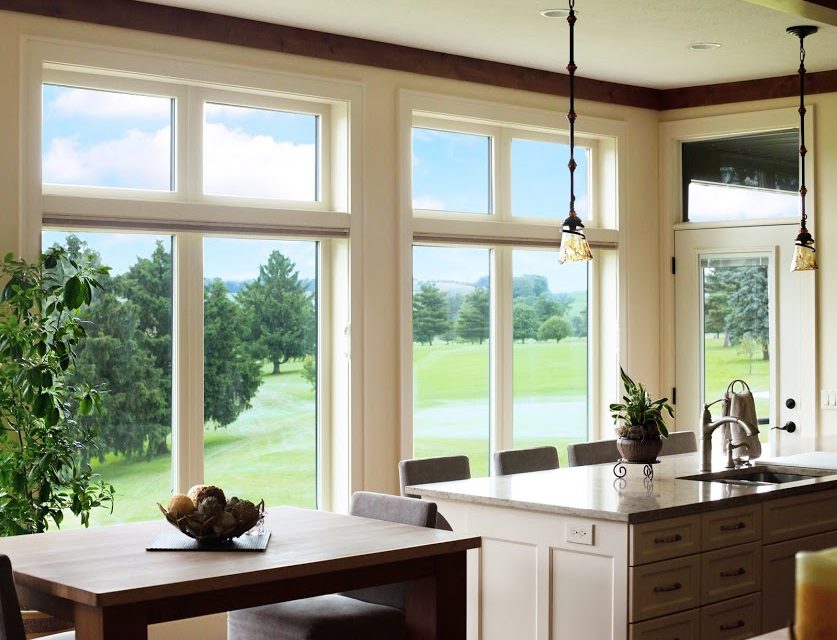Windows are an essential feature of any home, not only for its functional purposes but also for its aesthetic appeal. When it comes to window replacement or installation, understanding standard window sizes is crucial. By familiarizing yourself with these sizes, you can make informed decisions that will enhance your home’s overall appearance, insulation, and practicality. This article will explore the importance of knowing standard window sizes, provide an overview of various window sizes, discuss how to measure window sizes accurately and compare the advantages and disadvantages of custom window sizes versus standard window sizes.
The Importance of Knowing Standard Window Sizes
The size of windows plays an integral role in a home’s overall appeal and efficiency. Homeowners can achieve a harmonious balance between form and function by understanding standard window sizes. Let’s delve deeper into three key reasons why this knowledge is vital: enhancing aesthetic appeal, ensuring proper insulation, and facilitating easy installation and replacement.
Enhancing Aesthetic Appeal
One of the primary reasons people choose to replace their windows is to enhance their home’s visual appeal. By opting for standard window sizes, you join the ranks of millions of homeowners who value the importance of proportion and balance. Standard sizes have been carefully designed to ensure that windows fit seamlessly into the architectural style of a home, creating an aesthetically pleasing result. This coherence is crucial for preserving the property’s curb appeal in neighborhoods subject to strict building regulations.
Imagine driving through a neighborhood where every house has windows of different sizes and shapes. The lack of uniformity creates a chaotic and disjointed visual experience. On the other hand, when standard window sizes are used, the neighborhood exudes a sense of order and harmony. The windows complement each other, creating an appealing and inviting atmosphere for residents and visitors.
Furthermore, standard window sizes offer more versatility in window treatments and decor. With standard sizes, homeowners have a wide range of options for choosing curtains, blinds, or shutters. They can easily find off-the-shelf window treatments that fit perfectly, saving time and effort in the search for the right fit.
Ensuring Proper Insulation
Proper insulation is crucial for maintaining a comfortable home environment and reducing energy costs. Windows that do not fit well or have incorrect dimensions can lead to drafts and energy leakage. By choosing standard window sizes, you can know that these windows have been engineered to meet industry standards, ensuring a tight and energy-efficient fit.
Imagine a cold winter day with gusts of wind blowing outside. You may feel a chilly breeze seeping into your home without properly insulated windows. This makes the space uncomfortable and forces your heating system to work harder, resulting in higher energy bills. With their precise measurements and snug fit, standard window sizes prevent such drafts and ensure that your home remains cozy and well-insulated.
Moreover, standard window sizes make purchasing insulation materials more convenient. When you know the exact dimensions of your windows, you can easily find insulation products designed to fit them perfectly. This eliminates the need for custom-cutting insulation materials, saving time, money, and potential measurement errors.
Facilitating Easy Installation and Replacement
In addition to enhancing aesthetic appeal and ensuring proper insulation, standard window sizes also facilitate the process of installation and replacement. Manufacturers and contractors are highly experienced in working with these standard sizes, simplifying the installation process.
Imagine hiring a professional window installer to replace your windows. With standard window sizes, the installer can quickly source the required materials and complete the installation efficiently. There is no need for custom manufacturing, which can be time-consuming and costly. The familiarity with standard sizes allows contractors to work quickly and accurately, minimizing any potential disruptions to their daily routines.
Furthermore, if you ever need to replace a broken window, standard sizes make the replacement process much more manageable. You can order a new window of the same size and install it without complications. This convenience saves you both time and money, as you don’t have to wait for custom-made windows or incur additional expenses for custom manufacturing.
An Overview of Standard Window Sizes
Now that we understand the importance of standard window sizes let’s explore an overview of the most commonly used sizes in the market. This will help you better understand which sizes are typically available and widely used.
Single-Hung Window Sizes
Single-hung windows are a popular choice for many homeowners. These windows have one movable sash, usually the lower one, and a fixed upper sash. Standard single-hung window sizes range from 24 to 48 inches in width and 36 to 72 inches in height, providing various options to fit different spaces and preferences.
Double-Hung Window Sizes
Double-hung windows are another commonly chosen option. These windows have two movable sashes, allowing for enhanced ventilation and ease of cleaning. Standard double-hung window sizes range from 24 inches to 48 inches in width and 36 inches to 72 inches in height, providing versatility in accommodating different architectural designs and preferences.
Sliding Window Sizes
Sliding or gliding windows are a modern and practical choice for many homeowners. These windows feature one or more panels that slide horizontally to open and close. Standard sliding window sizes range from 36 inches to 84 inches in width and 24 inches to 72 inches in height, offering a wide range of options for various sized openings and preferences.
Bay Window Sizes
Bay windows are a striking architectural element that adds dimension and character to a home. These windows protrude from the exterior wall, creating a bay-like area. Standard bay window sizes vary widely, depending on the design and configuration chosen. They typically start at a width of 36 inches and can extend up to 120 inches or more. Regarding height, standard sizes range from 48 to 84 inches and can be customized based on individual preferences.
How to Measure Windows
Accurately measuring window sizes is essential when replacing or installing new windows. To ensure a proper fit, follow these step-by-step instructions, and make sure to gather the necessary tools:
Tools Needed for Measuring Windows
Before you begin measuring, gather the following tools:
- Tape measure
- Pencil
- Pad of paper or a notepad
Step-by-Step Guide to Measuring Window Sizes
- Start by measuring the width of the window frame from inside to inside. Measure across the top, middle, and bottom of the window. Take note of the smallest measurement.
- Next, measure the window’s height from the top of the window frame to the bottom. Measure on the left, center, and right sides of the window and record the smallest measurement.
- If you are replacing an existing window, measure the depth of the window frame by measuring from the outer edge to the inner edge.
- When ordering new windows, provide the manufacturer with the smallest width and height measurements to ensure a proper fit.
Custom Window Sizes vs. Standard Window Sizes
While standard window sizes are widely used and have many advantages, custom window sizes may be necessary or preferred in certain situations. Let’s weigh the pros and cons of each option:
Pros and Cons of Custom Window Sizes
Custom window sizes offer greater flexibility when fitting unique or unusually shaped openings. They allow for maximum creativity in design and can cater to specific architectural requirements. However, custom window sizes often come with a higher price tag. The manufacturing process may also take longer, leading to potential delays in installation or replacement.
Pros and Cons of Standard Window Sizes
Standard window sizes are readily available and offer a range of options to meet the needs of most homeowners since they are mass-produced and generally more cost-effective than custom window sizes. Additionally, standard sizes are easier to replace or source in case of damage or wear. However, standard sizes may not be suitable for non-traditional or irregularly shaped openings, potentially requiring modifications to the existing structure.
In conclusion, understanding standard window sizes is essential for homeowners considering window replacement or installation. You can achieve an aesthetically appealing result by choosing standard sizes, ensuring proper insulation, and simplifying the process. However, it’s important to weigh the advantages and disadvantages of custom window sizes and consider individual requirements before deciding. Whether you opt for standard or custom sizes, investing in high-quality windows will significantly impact the aesthetic appeal, comfort, and energy efficiency of your home.


